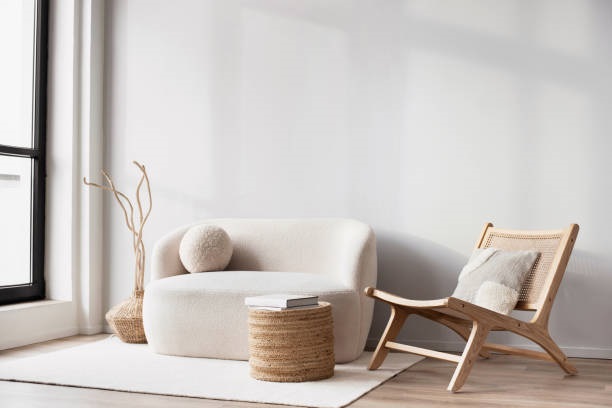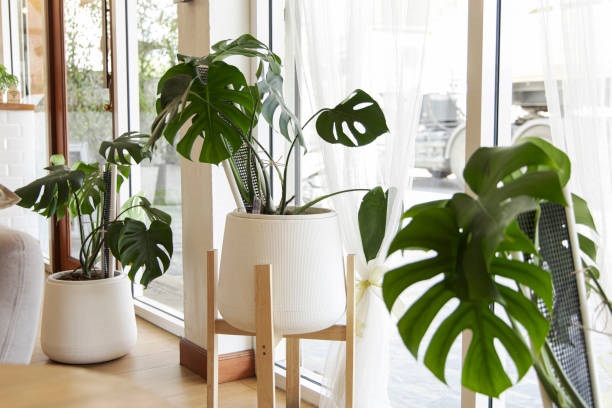
Japandi style merges the clean lines and decluttered approach of Japanese interiors with the warmth and comfort of Scandinavian homes. It emphasizes natural materials, neutral colors, and functional design for everyday living.
The goal is to create spaces that feel inviting while remaining minimal and uncluttered. Every piece of furniture and décor serves a purpose while contributing to the room’s overall atmosphere of tranquility.
Both cultures value craftsmanship, sustainability, and mindful living. This shared philosophy makes Japandi an ideal style for people who appreciate beauty, simplicity, and practicality in their homes.
Unlike strict minimalism, Japandi avoids cold or sterile interiors by incorporating cozy elements from Scandinavian hygge. Soft textures, warm wood tones, and layered textiles make the space more welcoming.
Japanese interiors often use minimal décor and open layouts, while Scandinavian designs embrace light-filled spaces and soft furnishings. Japandi blends these traits seamlessly, creating a balance between simplicity and comfort.
This style avoids clutter but doesn’t feel empty. Instead, it uses carefully chosen accents that add character without overwhelming the visual calm of the space.
Japandi interiors use natural materials such as wood, stone, bamboo, and cotton to create a grounded, organic feel. These materials bring warmth and authenticity to the design.
Layering textures is key to achieving comfort without visual clutter. Woven rugs, linen curtains, and wooden furniture add depth while maintaining the minimalist approach.
Sustainable and locally sourced materials are preferred, reflecting the shared Japanese and Scandinavian respect for nature and craftsmanship.
Japandi color schemes focus on soft, muted tones inspired by nature—beige, taupe, cream, and soft gray dominate. Darker accents like charcoal or deep brown add contrast.
This neutral palette creates a calming backdrop, making it easy to mix furniture and décor pieces without visual conflict. The result is a timeless and adaptable design.
Pops of color are rare but intentional. A muted green plant or soft blue cushion can break the monotony while staying true to the understated aesthetic.
Every piece of furniture in a Japandi home serves a purpose. Designs are simple, durable, and made with quality materials, ensuring longevity and minimal waste.
Low-profile furniture, such as Japanese floor seating or Scandinavian wooden chairs, maintains an open and airy feeling.
Multifunctional pieces, like storage benches or extendable tables, fit perfectly in smaller spaces without adding unnecessary clutter.
Japandi design values open layouts that encourage natural light and easy movement. Clutter-free spaces make rooms feel larger and more peaceful.
Furniture is arranged to create a sense of flow, allowing for practical use without blocking pathways or light sources.
This open concept also reflects the Japanese principle of Ma, which emphasizes space between objects as part of the design.
Lighting in Japandi interiors is soft, warm, and layered. Scandinavian influences bring bright, daylight-inspired fixtures, while Japanese touches add lanterns or shoji screens for gentle illumination.
Table lamps, floor lamps, and pendant lights with natural materials enhance coziness and warmth during evenings.
The aim is to avoid harsh overhead lighting in favor of subtle, ambient options that enhance the space’s relaxing vibe.
Greenery plays a big role in Japandi interiors, bringing life and freshness to muted spaces. Plants also connect the indoors with nature, aligning with both Japanese and Scandinavian values.
Potted plants like bonsai, snake plants, or simple greenery thrive in these minimal yet warm settings.
Planters are often made from ceramic, wood, or stone to match the natural material theme.
Japandi isn’t just about aesthetics—it’s about living mindfully. It encourages sustainable furniture, energy-efficient lighting, and minimal waste in home décor choices.
Japanese wabi-sabi embraces imperfection, while Scandinavian design values long-lasting quality. Together, they promote responsible consumption.
This design approach encourages purchasing fewer but better-quality items, fostering a mindful relationship with your living space.
While Japandi leans toward minimalism, personal touches are welcome if they are intentional and harmonious with the space. A single piece of art or a handmade pottery vase can add character.
Avoid over-decorating; instead, curate your personal items thoughtfully. This ensures that each object feels meaningful and enhances the overall design.
Personal touches in Japandi style are subtle yet significant, making the space truly yours while keeping the visual serenity intact.
Modern homes often face the challenge of balancing functionality with style. Japandi provides a solution by merging minimalism with comfort, making it suitable for urban apartments or spacious houses.
Its timeless aesthetic works across cultures and climates, making it a versatile interior design choice.
Japandi’s focus on calm, organized, and cozy living makes it an ideal style for reducing stress in today’s fast-paced world.
Start with decluttering your space, then choose a neutral color scheme. Add natural materials, cozy textiles, and purposeful furniture to build your Japandi look.
Incorporate plants, layered lighting, and open layouts to enhance calm and connection with nature.
Over time, your Japandi space will evolve into a balanced sanctuary that feels both minimal and inviting.

This post has been published by the admin of our website, responsible for content management, quality checks, and providing valuable information to our users.

